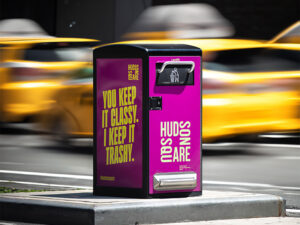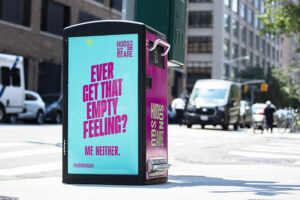It’s funny how trends create new opportunities with unforeseen consequences.
So what’s the unforeseen consequence?

Well, one thing that the newer entrants are discovering is that in-store dining means a much higher volume of public-area waste, adding new work and complicating store operations. The people who collect waste from the dining and recycling areas are often retail associates who would otherwise be servicing customers. The high volume of trash takes them away from their main jobs, typically with distressing frequency. If they miss a cycle, predicting fullness incorrectly, the consequences – from overflows in the public eye to odors that demarcate an olfactory no-man’s land – are unappetizing, unsanitary and unacceptable. Square footage ends up going for trash receptacles, taking away seating and floor space. The likelihood of litter and pests grows, especially if there is outdoor seating. The perception of food waste in open trash containers is revolting and undermines the experience of diners. And the waste stream contains a large volume of recyclable material, which educated in-store diners expect to be able to recycle without hunting for the recycling nook.
The net is that the concept and execution of the grocerant are fantastic, but the waste and recycling issues can be a migraine. The solution comes from retail’s genius at knowing when to standardize, when to innovate, and when to adopt technology from other sectors.
In order to make sure the rising tide of in-store dining business doesn’t create waste problems that taint the goodness of the concept or swamp their people, some retailers are exploring solutions for automation. Their research takes them to smart public-space waste and recycling systems, which are used widely in hospital cafeterias and mall food courts. These tend to be the highest throughput and most labor intensive trash locations in any institution, so the adoption of a proven paradigm from other sectors and application of it to grocerants and their experience of a rising waste stream is a natural.
Operationally, what they have in common is a need for a way to reduce collection frequency in high traffic and high intensity dining areas, enable recycling and composting for a discerning audience, and enhance the visual appearance of inside and outside areas. One top-tier grocerant implemented a smart waste and recycling system. They were able to drop collections per waste location from 40 per week to 5 per week across a fleet of 12 trash cans. This avoided the cost and distraction of 35 collections, times 12 trash cans, times 365 days per year: or almost 22,000 pulls per year. And all but eliminated the tableau of dining on fine food while watching trash cans being emptied. The trash cans also turned out to be a nice way to brand the store and build goodwill by showing the commitment to recycling at the location where people spend the longest part of their store visit.
The outcomes for grocerants using innovative technology are material. Savings can be as high as two FTE’s per store per year; the FTE’s are redirected to customer service or other value-enhancing areas of store operations. This result for a single store is solid, while at the scale of a chain, the sky is the limit. For example, integrated notifications from smart and automated systems eliminates the aggravating practice of checking every trash can every half hour and allows employees to focus on customer-focused interactions. At the regional and enterprise levels, this data and system integration is captured in the cloud, where it can be used for tuning store operations across the company, reporting on recycling and sustainability, and ensuring an attractive and consistent store design. The prospect of recovering 1 – 2 FTE’s times X numbers of stores has a definite allure. To cut a long story short, the idea of an enterprise-grade process management system, which uses automation to balance the needs of store personnel, who require an efficient way to get their work done, and corporate personnel, who require ways to scale efficiency across the company, is compelling.
So the good news is that the unforeseen consequences can be mitigated. The dining experience improves, thanks to modernized waste and recycling; and the shopping experience improves because retail associates, liberated from the task of checking and emptying trash cans, return to customer service. Automation works.



